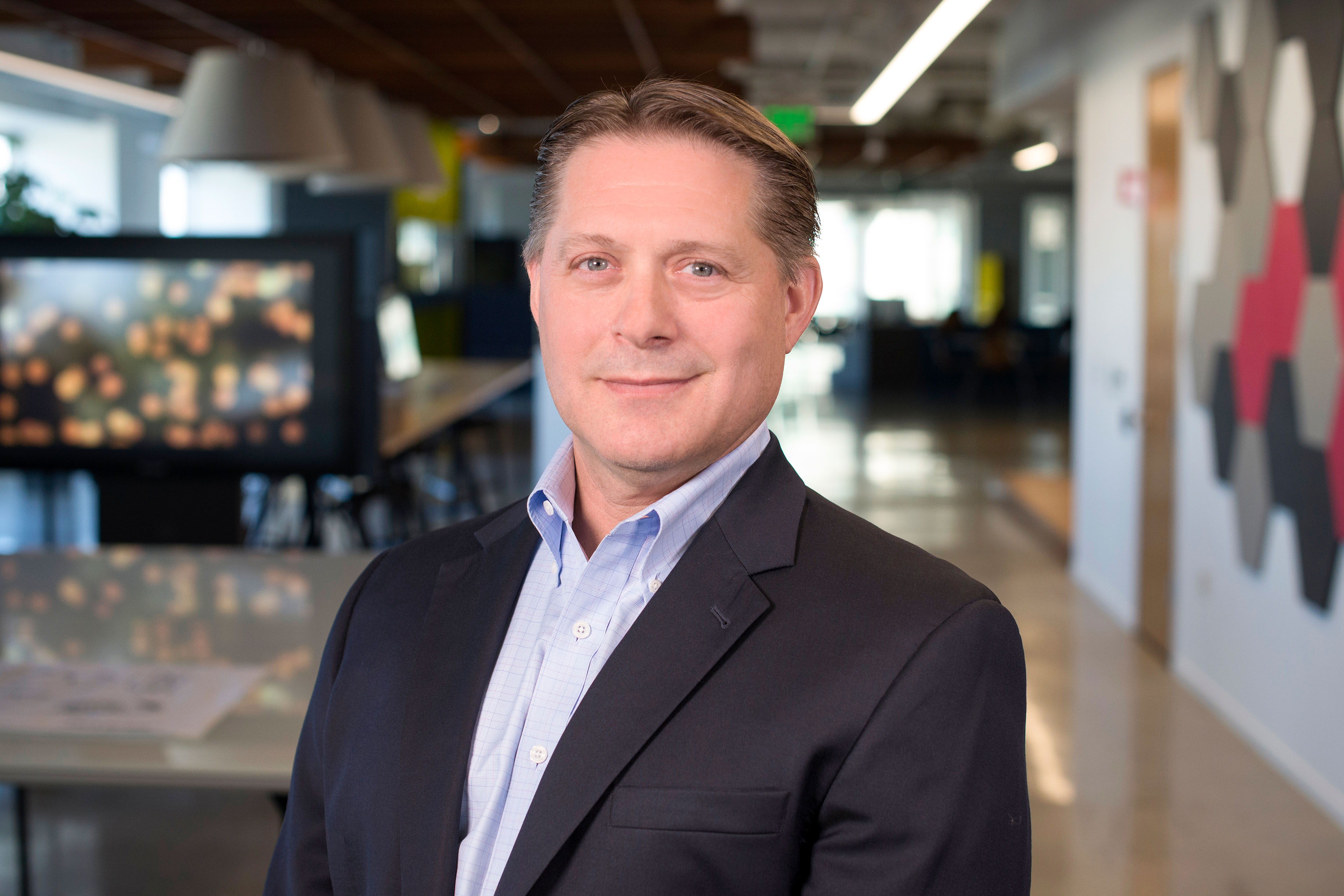EY refers to the global organization, and may refer to one or more, of the member firms of Ernst & Young Global Limited, each of which is a separate legal entity. Ernst & Young Global Limited, a UK company limited by guarantee, does not provide services to clients.

After its IBM spinoff, Kyndryl gained the freedom to imagine and the flexibility to build — through alliances. Stephen Leonard, Global Alliances & Partnerships Leader, Kyndryl, tells us how.
In brief
- As industries blur and tech is embedded in everything we do, the “buy, build or partner” paradigm is increasingly tilted toward strategic partner ecosystems.
- Kyndryl’s separation allowed it to enter ecosystems that matter most to its significant customer base and rapidly augment its core legacy offerings.
Many large companies that have built enviable market shares in their industries face the challenge of equipping for the future while shaking off the mindsets, processes and technologies rooted in the past. With decades or even centuries of history, these organizations have legacies to build on — and legacy strategies to transcend. But how can this be done in a business environment that demands speed?
Every market leader should be asking this question, from my own organization to the dominant tech giants. The answers lie in a “buy, build or partner” paradigm reimagined for today’s reality, in which disruptive technologies have shed the “emerging” label and corporate transformations are continual evolutions, not sporadic changes in direction. It’s a dynamic that Stephen Leonard knows intimately as Global Alliances & Partnerships Leader for Kyndryl, the leading IT infrastructure services provider that spun off from IBM in late 2021.
We discussed how the divestiture allowed Kyndryl to define its own course with new alliances and how the company has navigated the past year on its own, spotlighting how companies in similar positions can reimagine their own roadmaps to the future.
EY: In 2021, around the time that Kyndryl was being spun out, EY researchers performed a Global Corporate Divestment Survey showing that 94% of respondents cited the technology landscape as a driver influencing divestment plans, up from 59% before the pandemic. Yet 39% still struggle to define which businesses in their portfolios are core or non-core. Even in the tech sector, known for evaluating its portfolios more rigorously than others, 80% of companies said they have held onto assets too long. What prompted IBM to act in terms of what would become Kyndryl?
Stephen Leonard: I worked for IBM for over 30 years, including in many IT infrastructure-related areas that are now core to Kyndryl, such as cloud services. There was a recognition that a separation would free up both organizations to pursue independent growth strategies while remaining partners.
From Day One, Kyndryl had revenues of about $19 billion and thousands of enterprise customers in more than 60 countries. That’s an enviable starting position for any company. The spin gave us an opportunity to evolve our business model and augment our core legacy offerings. For instance, we recently unveiled Kyndryl Bridge, an operational monitoring system that helps CIOs gain greater control of potential problem areas, as well as Kyndryl Vital, which pairs our consultants with clients in prototyping services more proactively. And, importantly, the separation allows us more freedom to participate in a broader ecosystem that matters most to our customers.
EY: EY research has shown that bold decisions for significant divestments ultimately have much higher returns compared with smaller ones. Hearing your response, I’m reminded of discussions we’re having internally in my organization about a potential separation. We have different groups that are fundamentally strong, and their futures aren’t necessarily in conflict, but they are competing for the same capital. And our audit side has been such a success that it places independence restrictions on the rest of the business, including in the alliances we can pursue.
Stephen Leonard: Alliances are a big part of how Kyndryl will compete — they offer an opportunity to take our level of service and the trust we have with our clients and unite them with new solutions and technologies in new markets. Digital transformation is inherently complex, and so is the client base that we serve. We have our strengths that we continue to build on, and alliances give us that extra heft in the market, a combination of greater credibility and opportunity. We’re bringing the technical skills and knowledge that transcends industry and spans the globe, coupled with security and trust. And now we have the flexibility to pick best-in-class technologies from the more than 20 vendors we’ve built relationships with, including Ernst & Young LLP (EY).
For instance, Kyndryl supports Amazon Web Services and Google Cloud’s Dual Run, and we now offer a service called Mainframe Data Pipe to Microsoft Azure. Our clients have their own reasons for picking their vendor, or often more than one in a hybrid-cloud environment. Regardless, Kyndryl has the people with the skills and experiences to complete these infrastructure engagements quickly yet thoughtfully. Recently we’ve announced initiatives with Microsoft and Dell, as well as new alliances in top-of-mind areas like artificial intelligence and workplace flexibility.
EY: Again, what you’re saying resonates with our strategy here at EY, which relies heavily on alliances. We think of this as an “asset-right” framework — in essence, re-evaluating what organizations define as core and non-core, understanding how to create differentiation based on that and the assets required, and aligning enablers as well as outcomes. Those actions are employed alongside a deep focus how to optimize return on capital deployed.
Stephen Leonard: For us at Kyndryl, the spin was a way for us to focus on our core capabilities without needing to look over our shoulder, and the alliances we’ve chosen allow us to maintain that focus, capitalize on it in new ways and continue to branch out while providing our customers a faster time to value. The power of our alliances and ecosystems presents us with the ultimate win-win: our partners gain access to a market space worth about a half-trillion dollars, while we have greater flexibility to unite the best people, skills and products in a heterogeneous solutions environment. Any other company that understands its core and non-core skills and assets should be looking at how to positively leverage them with alliances, and a divestment can be a core part of that strategy.
EY: No doubt some companies are fearful of how a significant divestment could play out, particularly amid so much economic uncertainty. A year after Kyndryl’s separation, what are some of the challenges you’ve faced?
Stephen Leonard: It’s good to be such a robust player in the market on Day One, but the flip side is that we have some complexity in our operations that relate more to our past than the future we’re building. We’ve engaged EY teams on IT asset management, concerning data quality and automation, for example. Brand recognition is also an area we are continuing to improve on, and I’m excited about the unfettered future we’re building — we’ve stripped out some of the limitations and can really start to let ourselves ask what is possible according to our strategy and not just what works within a broader organization.
Summary
Partner ecosystems are a powering tool for keeping pace with a landscape of disruption and accelerating growth opportunities. And to gain capital for transformations, strategic spinoffs can pay off for both organizations.
Related articles
How spin-offs are a catalyst for increasing leadership diversity
Spin-offs can be an opportunity for companies to increase leadership diversity. Learn more.
Top 10 opportunities for technology companies in 2023
In a volatile business environment, will the bold be rewarded? Now is the time to invest and test the waters with new business models. Read more.
How EY can help
-
EY-Parthenon professionals can help your business design and provide transformative strategies for sustainable growth. Learn more.
Read more





